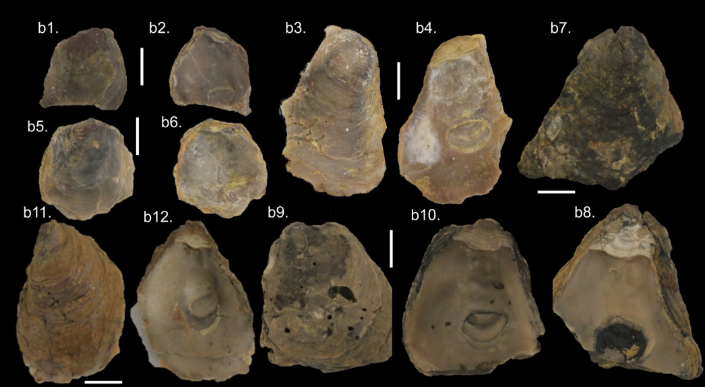
Fossilized oyster shells collected in western India.
Credit: Mitra, de Winter, et al. Paleoceanography and Paleoclimatology https://doi.org/10.1029/2025PA005129
AGU News
2026 Ocean Sciences Meeting will convene in Glasgow, Scotland, 22-27 February
Staff, freelance and student journalists, press officers and institutional writers are eligible to apply for complimentary press registration. Book conference hotels early! [media advisory][OSM26 Press][press eligibility guidelines]
Featured Research
Ocean will burp out accumulated heat in an ideal cooling world
The ocean absorbs both heat and carbon dioxide, buffering the effects of global warming. If, in the best of all possible worlds, future humans consistently remove more carbon dioxide from the atmosphere than they add, how would ocean buffering behave in reverse? A new study predicts that after several hundred years of cooling, the atmosphere would warm again for about a century at a rate comparable to our present warming as the deep Southern Ocean disgorged its store of heat. But, thanks to complicated sea water chemistry, these heat burps would not include much carbon dioxide. [AGU Advances study]
Ancient oysters hint at a hotter past India
Fossil shells tell a story of conditions in the deep past. 40 million years ago, oyster shells recorded the temperatures and conditions that they grew in. Fossils found in India held a history of a much hotter landscape. Millions of years ago, the oysters recorded warmer months that averaged 34 degrees Celsius (93 degrees Fahrenheit) with only a few degrees difference in temperature throughout the different seasons. Compare that with modern day India which averages around 25 degrees (77 degrees), dipping into the single digits during winter. [Paleoceanography and Paleoclimatology study]
Plants’ use of CO2 complicates estimates of global drying amid climate change
As human actions elevate the amount of CO2 in the atmosphere, growth of plants—which use the gas to photosynthesize—is also intensifying in what some experts have dubbed “global greening.” This, in addition to the warming effect of CO2 in the atmosphere, can dry out soils: plants draw water from the land and lose some of it to the air upon opening their pores to absorb CO2. At the same time, with more CO2 in the air, they don’t need to keep their pores open for as long. This means less water is lost than previously expected according to a new study. Researchers in China modeled how different conditions affected land drying from 1982 to 2014 and found that atmospheric CO2 offset about 69% of the global water loss that would have otherwise occurred from warming and greening–significantly more than traditional drought and aridity indices account for. The authors say the findings could help inform management of water resources as climate change continues. [Water Resources Research study]
A step toward AI modeling of the whole Earth system
Coupling an AI-driven model of the atmosphere with a model of the ocean could help scientists create highly efficient emulations of the entire Earth system. [Eos research spotlight][JGR Machine Learning and Computation study]
Magnetic “switchback” detected near Earth for first time
Until recently, this type of zigzag shape—formed by energetic rearrangement of magnetic field lines—had been seen only near the Sun. [Eos research spotlight][JGR Space Physics study]